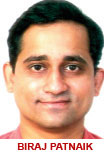First food: business of taste
Good Food is First Food. It is not junk food. It is the food that connects nature and nutrition with livelihoods. This food is good for our health; it comes from the rich biodiversity of our regions; it
Good Food is First Food. It is not junk food. It is the food that connects nature and nutrition with livelihoods. This food is good for our health; it comes from the rich biodiversity of our regions; it
This guide describes methods and tools with which to undertake a right to adequate food assessment. The guide attempts to be practical, and to provide the most relevant methodological and operational information.
Food security exists when all people, at all times, have physical, social and economic access to sufficient, safe and nutritious food to meet their dietary needs and food preferences for an active and healthy life. The four pillars of food security are availability, access, utilization and stability. The nutritional dimension is integral to the concept of food security and to the work of CFS.
This Save the Children report highlights the achievements and challenges in ensuring the survival of children under the age of five. Its publication coincides with the launch of the global campaign on newborn and child survival and serves to remind world leaders to honour their commitments to achieve Millennium Development Goal 4.
<p>The wisdom that indigenous people have regarding bioprospecting is embedded in their belief system and their culture. Food insects play an important role in the new insect focus.</p>

There has been an animated debate in the past three years over the supply of food in the ICDS (Integrated Child Development Services) programme. Supplementary nutrition has been provided to all children under the age of six since the inception of the programme more than three decades ago. This was done with the recognition that the nutrition gap (between what children should be

The ICDS programme launched in the 1970s was based on the results of extensive surveys which identified rampant child under-nutrition in India. Using the weight-for-age and height-for-age criteria, only 10 per cent children under five could be classified normal. And 15-20 per cent were underweight even when they were short. The situation has not improved in the past 35 years despite
Gandhinagar: The Planning Commission has decided to fund three new schemes to help Gujarat improve its health index, which is low compared to many other states. Planning Commission approved the state
Lawrence Haddad

Civil society and the media are unfairly blaming a government nutrition programme I have been a political journalist for over three decades. Only recently have I become familiar with the nitty gritty of development reporting. The manner in which malnutrition is covered by a section of the media has come as an eye opener. It appears those who report on the subject generally confine
One of the major factors affecting the health and growth of children in the State is lack of easy accessibility to immunization services. Lack of information regarding nutrition and inaccessibility to nutritious food have also become a matter of concern with more than 50 per cent of children in the State suffering from malnutrition.